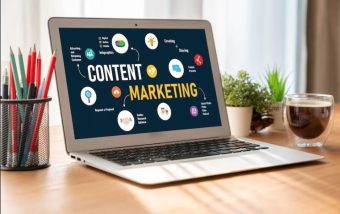How To Know If Someone Blocked You On iMessage? 5 Secret Hacks!
Apr 16, 2025

Apr 16, 2025

Apr 16, 2025

Apr 15, 2025

Apr 11, 2025

Apr 11, 2025

Apr 11, 2025

Apr 08, 2025

Mar 29, 2025
Sorry, but nothing matched your search "". Please try again with some different keywords.


When it comes to website management, one of the most important things you can do is stay up-to-date. Drupal is an open-source content management system that was created in 2001 and has been used to power millions of websites since then. This open-source software allows users to build their sites or customize existing ones. However, this flexibility also means that when upgrading Drupal; there are many moving parts involved in ensuring a seamless transition goes off without a hitch.

Upgrading your Drupal site is an important part of the life cycle of your website. In addition to keeping your site secure and up-to-date, it also allows you to take advantage of new features and functionality. Upgrades can be tricky, though, so it’s important to plan to make sure they go smoothly. If you’re looking for expert assistance with Drupal upgrades, consider reaching out to trusted professionals like https://gettrusted.io/services/ecommerce-development/drupal/upgrade-migration/. Their specialized services can help ensure a seamless transition while maximizing the benefits of your website’s evolution.
Before you upgrade, it’s important to know that there are some things you can do in advance to make the process smoother.
To ensure a smooth transition, you should follow these best practices:
To ensure that your content is secure and accessible, it is important to do the following:
In addition, we recommend that you have a plan for ensuring data integrity and security if you are performing an upgrade on an existing Drupal site.
As you plan your upgrade, it’s important to test the process thoroughly. This will help ensure that any issues you encounter can be resolved before they affect your users. It also ensures that the system works as expected across different browsers and devices, with different roles and content types in place.
In addition to testing with real user accounts (such as those belonging to administrators), consider testing upgrades using test accounts for each role type you have defined in Drupal (e.g., editors, authors). Test upgrading both simple and complex content types with varying levels of field data (e.g., one field vs 10 fields). Test upgrading sites that are set up in multiple languages and character sets; similarly, test sites use different time zones or daylight saving times so that they display properly after an upgrade has been completed.
A compatibility issue is a problem that can occur when you upgrade your Drupal site. For example, if you have third-party modules installed on your site and they’re not compatible with the new version of Drupal, there may be issues after upgrading.
Another reason why upgrading without fixing all compatibility issues first is bad news: It’s time-consuming and tedious work! You’ll have to go through each module individually to check whether or not it works with the latest version of Drupal (or whatever CMS software you’re using). If there’s no documentation available for how to do this manually, then we recommend using automated tools like Devel Module or Drush Make instead.
Custom modules and themes are one of the biggest potential pitfalls when performing a Drupal upgrade. These will not be upgraded automatically by Drupal, so you’ll need to make sure they’re compatible with your new version before moving forward with an update.
It’s important to remember that your users are the people who will be using and benefiting from your website, so it’s important to train them on how to use it. You should also communicate with them about any changes that may come with an upgrade and what those changes mean for them.
For example: If you’re updating a module or theme that has been in place for some time, it might be helpful for users if you provide an overview of what has changed since the last upgrade (e.g., “This new version includes these new features”). Similarly, if there have been any significant updates within Drupal itself (e.g., 8 versus 7), this information can help inform their understanding of how they might utilize those features going forward.
If possible, try having someone from IT check in with key stakeholders before making any major changes; this way they’ll know what’s coming down the pipeline so they won’t feel blindsided by anything later on!
Once you’ve completed the upgrade, it’s important to monitor your system and ensure everything is running smoothly. Here are some things to keep an eye on:
The Drupal community is one of the most active and diverse in the world. It’s also a great place to find help with your upgrade project. You can reach out to other developers on IRC or Slack, or even meet up in person at local meetups. The Drupal Association offers resources such as training materials, webinars, and more!
More Resources:
Mashum Mollah is the feature writer of SEM and an SEO Analyst at iDream Agency. Over the last 3 years, He has successfully developed and implemented online marketing, SEO, and conversion campaigns for 50+ businesses of all sizes. He is the co-founder of SMM.
View all Posts
How To Know If Someone Blocked You On iMessag...
Apr 16, 2025
7 Website Design Mistakes That Are Hurting Yo...
Apr 16, 2025
Programmable Dynamic SEO for Location-Based P...
Apr 15, 2025
Google Boba Game: How To Play This Fun Game B...
Apr 11, 2025
Which Is The Best Video Search Engine Of 2025...
Apr 11, 2025

